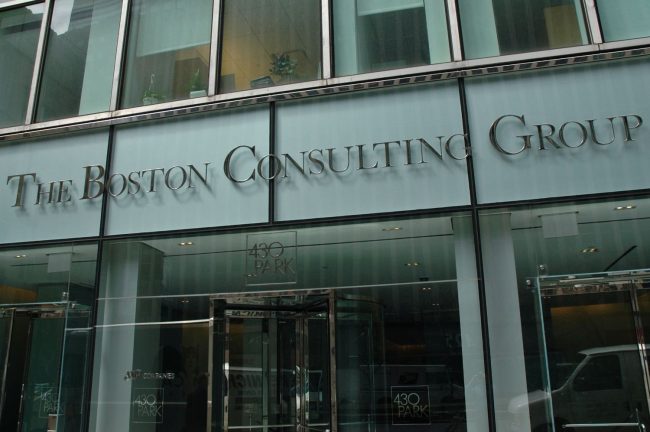Dimitrios Goranitis, FSI Risk & Regulatory Advisory Partner, Deloitte Central Europe
Earlier this month, the three European Supervisory Authorities (EBA, EIOPA, and ESMA) released their first joint risk assessment report for 2022 meant to shed light on the complicated European economic outlook and the new and existing risks that could materialize for financial institutions. During 2021, the EU economy was on track for a strong recovery after the COVID-19 pandemic but new variants of the virus, rampant inflation, supply chain constrains, and geopolitical risks turned the tables around. The financial sector has proven quite resilient over the past year but the military conflict in Eastern Europe, and its broad consequences, left the door wide open for potential risks.
EU’s economic recovery has gone off the track
Based on highly expansive fiscal and monetary policies, the European economy was set for a strong bounce back after the pandemic, however, the outlook started to deteriorate since the 4th quarter of 2021. Euro Area inflation started to run riot, driven mostly by sharp rises in energy and fuel prices, reaching a record 5.9% in February 2022. The ECB was extra careful when it came to interest rate hikes as monetary shocks can damage short- and medium-term growth prospects for an economy already hit by many COVID-19 waves.
The latest and greatest hit for the European outlook came in February 2022, as the Russian invasion in Ukraine exacerbated all of Europe’s vulnerabilities. As the war is pushing energy prices higher, the ECB is slashing its 2022 GDP growth projection from 4.2% to 3.7% and it remains to be seen whether the new forecast is a realistic one. Further rising geopolitical tensions could additionally affect economic growth
through lower consumer and business confidence as well as supply and demand shocks. Accurate economic projections are difficult to achieve in this uncertain environment, but it is expected to see persistently high inflation combined with a potential slowdown in economic activity over the next quarters.
Vulnerabilities pile up
In the light of potentially difficult times ahead, the European Supervisory Authorities are urging financial institutions and market participants to make a priority out of several risks.
The ongoing geopolitical developments could give rise to potential further negative implications for financial institutions. While bank sector exposure to Russia and Ukraine appears limited, medium-term risks related to declining macroeconomic activity might increase credit risk. Moreover, banks and other financial services providers should ensure compliance with the sanctions regimes and improve on their AML & KYC capabilities.
A possible deterioration of asset quality in the financial sector could be expected. As the fiscal and monetary stimulus is withdrawn, a correction of potentially overvalued asset classes such as equities and real estate can have a significantly negative impact for the banking industry. A particular concern is the residential real estate sector where signs of a housing bubble have emerged throughout 2021. In response to these real estate risks, some Member States have increased countercyclical capital buffer requirements or systemic risk capital buffer requirements.
Potential further increases in yields and sudden reversals of risk premia should be closely monitored in terms of their impacts for financial institutions as well as for investors. Rising yields could result in higher funding costs for banks and higher credit risks but stress tests, such as the EBA 2021 EU-wide bank stress test, should help supervisors to identify vulnerabilities of the banking sector.
Retail investors come under scrutiny as their participation in financial markets has increased substantially in recent years. In the equity market, price-to-earnings ratios have been elevated throughout 2021 and retail investors are exposed to risks of market correction. It is also worth mentioning the increased appetite for crypto assets and as they are yet to be regulated in the EU, investors typically do not benefit from any safeguard or legal protection.
ESG considerations should be a focal point for bank’s business strategies and governance structures. In the banking sector, ESG-related risks may drive conventional financial risk categories, such as credit, market, operational, and reputational risk. Financial institutions should continue to develop methodologies and approaches to test their long-term resilience against ESG factors and risks. In the aid of the banking system’s preparedness and resilience against ESG risks, the EBA has published a Report on management and supervision of ESG risks for credit institutions.
As businesses become more and more digital orientated, banks should do their best to protect themselves against cyber-attacks. In recent years, the number of cybersecurity incidents has grown exponentially, and the current geopolitical tensions do this statistic no favor. As significant operational and reputational risks arise from potential cyber incidents, banks cannot afford to be caught off guard. In a first step for a wide scale defense system, in December last year, the European Systemic Risk Board made a clear recommendation for a pan-European systemic cyber incident coordination framework.
Conclusions
The combination of COVID-19, high inflation and a full-scale military conflict might prove too much for the European economy to cope with this year. Although the banking sector has not been significantly affected so far, caution is the word on everyone’s lips. Banks should ensure that newly originated loans are of appropriate credit quality, are appropriately priced, and maintain prudent credit standards. Also, as
sanctions towards Russian individual and businesses become more complex, banks should do their best to comply with the enforced AML & KYC standards. ESG considerations will be a focal point in the financial industry for years to come, and in today’s sophisticated online environment cyber security should be a top priority as well.





COMMENTS